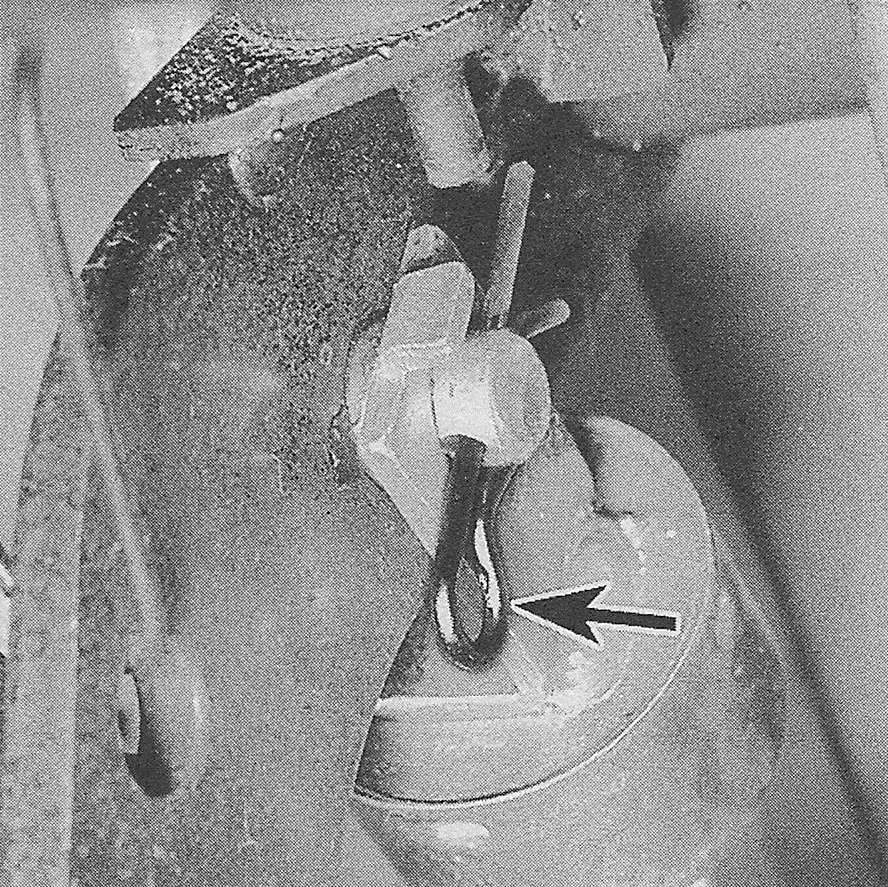Clutch master cylinder — removal and installation
Removal
1. Disconnect the negative cable from the battery (see Engine electrical systems).
2. Remove the power brake booster (see Brakes).
3. Working inside the engine compartment, use pliers to remove the clutch reservoir tube clamp from the clutch master. cylinder. Have rags handy as some fluid will be lost as the line is removed.
Caution: Don’t allow brake fluid to come into contact with paint, as it will damage the finish.
4. Remove the knee bolster (see Body) and disconnect the pushrod from the top of the clutch pedal. It’s held in place with a clevis pin (see illustration).
5.4 To release the clutch pushrod from the clutch pedal, remove the clip and clevis pin from the clutch pedal

5. From under the dash, disconnect the clutch hydraulic line. Use a flare-nut wrench on the fitting, which will prevent the fitting from being rounded off. Have a small can and rags handy, as fluid will be spilled as the line is removed.
6. Remove the master cylinder mounting nuts. Remove the master cylinder and gasket, again being careful not to spill any of the fluid.
Installation
7. Position the master cylinder on the pedal assembly and firewall, installing the mounting nuts finger-tight.
8. Connect the hydraulic line to the master cylinder, moving the cylinder slightly as necessary to thread the fitting properly into the bore. Don’t cross-thread the fitting as it’s installed.
9. Tighten the mounting nuts to the torque listed in this Chapter’s Specifications. Tighten the hydraulic line fitting securely.
10. Connect the pushrod to the clutch pedal.
11. Connect the clutch reservoir tube and fill the clutch master cylinder reservoir with brake fluid conforming to DOT 3 specifications and bleed the clutch system (see Clutch hydraulic system — bleeding).
12. Check the clutch pedal height and free-play and adjust if necessary, following the procedure in Chapter Tune-up and routine maintenance.
13. The remainder of installation is the reverse of removal.